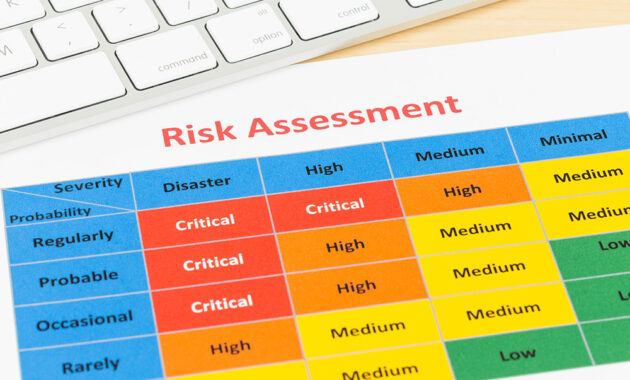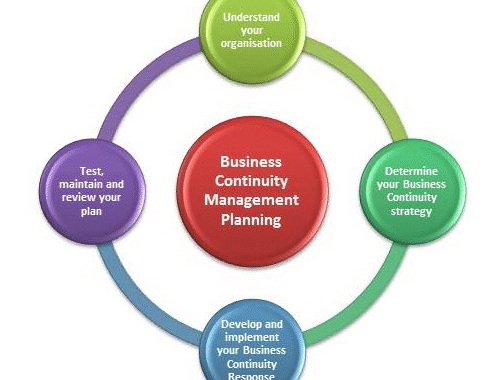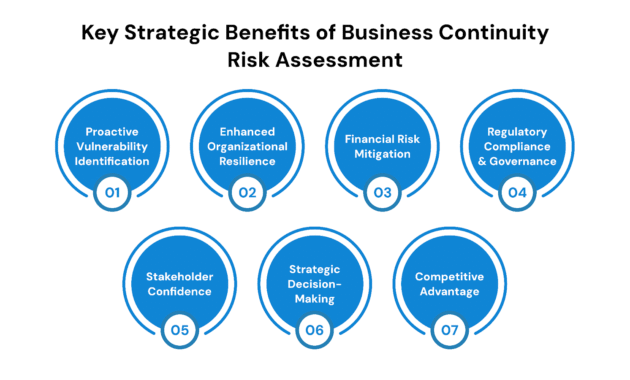Risk assessment is a crucial element in any business continuity plan. In today’s unpredictable world, organizations must be prepared to handle unexpected events that could disrupt operations. Business continuity planning (BCP) ensures that a company can continue to function even in the face of challenges, and risk assessment plays a foundational role in identifying potential threats and crafting proactive solutions.
What Is Risk Assessment?

Risk assessment is the process of identifying, analyzing, and evaluating potential threats to an organization’s operations. These risks can stem from various sources including natural disasters, cyberattacks, financial crises, supply chain failures, or human error.
Why Risk Assessment Matters
Without a clear understanding of the risks your business faces, it becomes difficult to plan for the future. Risk assessment helps businesses:
- Identify vulnerabilities
- Measure potential impacts
- Prioritize preventive measures
- Develop recovery strategies
Understanding Business Continuity Planning (BCP)
Business Continuity Planning involves creating systems of prevention and recovery to deal with potential threats. Its goal is to minimize disruption and ensure critical business functions continue during and after a crisis.
Key Components of BCP
- Business Impact Analysis (BIA): Determines how disruptions affect business functions.
- Recovery Strategies: Plans for restoring operations quickly.
- Plan Development: Documenting policies, roles, and procedures.
- Testing & Exercises: Simulating scenarios to test the plan’s effectiveness.
- Maintenance: Regular updates to reflect new risks or changes in the organization.
How Risk Assessment Fits Into BCP

Risk assessment is typically one of the first steps in business continuity planning. It informs every other aspect of the plan by identifying which threats are most likely and potentially most damaging.
Step-by-Step Integration
1. Identify Potential Risks
This involves listing all events that could negatively impact the business. Examples include:
- Power outages
- Natural disasters (earthquakes, floods)
- Cybersecurity breaches
- Pandemics or health crises
- Supplier failures
2. Analyze the Risks
Once risks are identified, analyze them in terms of:
- Likelihood: How probable is the event?
- Impact: What would be the consequences?
3. Evaluate and Prioritize Risks
Not all risks require the same level of attention. Evaluate:
- Financial loss
- Operational disruption
- Reputational damage
- Legal implications
4. Develop Mitigation Strategies
For each high-priority risk, create measures to reduce the chance of it occurring or minimize its impact if it does.
5. Align Risk Assessment with BIA
The insights gained during the risk assessment should be used to enhance the Business Impact Analysis, ensuring that the plan focuses on critical areas.
Common Tools Used in Risk Assessment
SWOT Analysis
Evaluates Strengths, Weaknesses, Opportunities, and Threats.
Risk Matrix
Ranks risks based on likelihood and severity.
Failure Mode and Effects Analysis (FMEA)
Identifies potential failures and their consequences in a process.
Scenario Analysis
Assesses how different scenarios would impact business operations.
Benefits of Risk Assessment in Business Continuity Planning

Improved Decision-Making
Understanding risks allows leadership to make informed decisions quickly during a crisis.
Enhanced Preparedness
A comprehensive risk assessment ensures the organization is ready for the most probable disruptions.
Regulatory Compliance
Many industries are required by law to perform regular risk assessments and maintain business continuity plans.
Resource Allocation
Risk prioritization helps allocate time and budget more effectively to critical areas.
Stakeholder Confidence
Employees, clients, and investors feel more secure when a company has a solid risk management strategy.
Challenges in Risk Assessment
Lack of Data
Incomplete or outdated data can lead to poor assessments.
Rapidly Changing Environment
New threats such as emerging technologies or market conditions require constant updates.
Human Bias
Subjective judgment in evaluating risks may result in inaccuracies.
Best Practices for Effective Risk Assessment
Involve Cross-Functional Teams
Gather insights from various departments to ensure all risks are captured.
Update Regularly
Conduct risk assessments at least annually or when significant changes occur.
Leverage Technology
Use risk management software to streamline analysis and monitoring.
Document Everything
Keep a detailed record of findings and decisions for accountability and future reference.
Conduct Training and Simulations
Prepare your team by running drills and reviewing responses.
Industry-Specific Risk Assessment
For Healthcare
- Power failures affecting life-support systems
- Data breaches involving patient records
For Financial Services
- Cyberattacks targeting customer data
- Regulatory compliance issues
For Manufacturing
- Machinery breakdowns
- Supply chain disruptions
Case Study: Risk Assessment in Action
A retail company conducted a risk assessment and discovered a major vulnerability in its supply chain. The risk analysis revealed that 80% of inventory came from one supplier located in a flood-prone area. By identifying this, the company diversified suppliers and created emergency inventory storage, ensuring continuity during seasonal floods.
The Future of Risk Assessment in BCP
With the rise of AI and data analytics, risk assessment is becoming more predictive than reactive. Tools are evolving to offer real-time monitoring, pattern recognition, and automated reporting, enabling faster and more accurate decision-making.
Also Read : Mortgage Loans: The Easiest Way To Own A Home
Conclusion
Risk assessment is not just a formality—it’s a powerful tool that lays the groundwork for a strong business continuity plan. By proactively identifying threats, analyzing their potential impacts, and preparing effective responses, businesses can navigate crises with resilience and confidence. Whether you’re a small startup or a multinational enterprise, integrating thorough risk assessment into your BCP is essential for long-term stability.
FAQs
What is the difference between risk assessment and business continuity planning?
Risk assessment identifies and analyzes potential threats, while business continuity planning outlines how to maintain operations during and after those threats occur.
How often should a business perform a risk assessment?
At least once a year, or when there are significant changes in the organization, operations, or external environment.
Can small businesses benefit from risk assessment?
Absolutely. Even small disruptions can severely impact small businesses, so proactive risk management is crucial.
What industries need risk assessment the most?
All industries can benefit, but it is especially critical in healthcare, finance, IT, manufacturing, and logistics.
What is a risk matrix?
A visual tool used to rank risks based on their likelihood of occurring and their potential impact on the organization.




